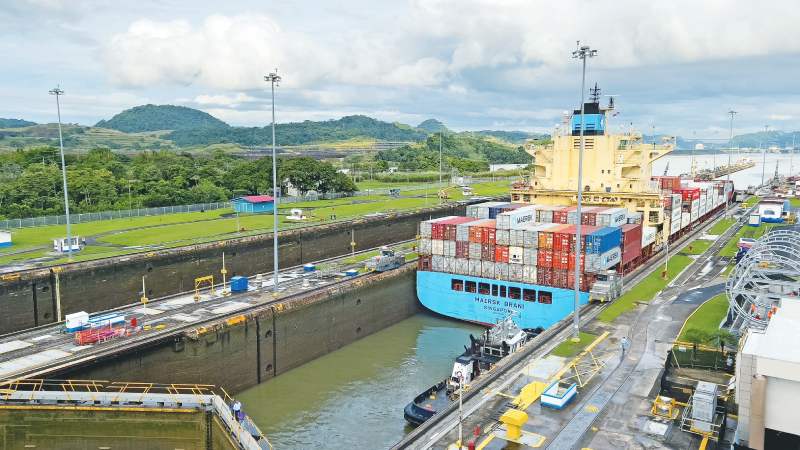Title: Panama Canal Struggles to Stay Afloat Amidst Drought and Declining Revenue
Subtitle: Decreased rainfall and El Niño threat loom over vital maritime trade route
Date: [Current Date]
Byline: [Author Name]
Panama City, Panama – The Panama Canal, known for its crucial role in international maritime trade, is facing a severe crisis as a result of dwindling water supplies caused by climate change and the El Niño phenomenon. The lack of rainfall has led to restrictions on ship drafts and is projected to result in a significant drop of $200 million in canal income in 2024.
“The great disadvantage that the Panama Canal has, as a maritime route, is the fact that we operate with fresh water, while the other maritime routes (such as the Suez Canal) use seawater,” explained Ricaurte Vásquez, the administrator of the Canal.
The draft restriction has already been implemented, reducing the allowable ship draft to 13.11 meters, falling two meters lower than previous allowances. This move comes as a desperate attempt to preserve water levels in the canal and combat the unprecedented crisis. Vásquez emphasized that draft restrictions are likely to persist until September 30th of next year.
The reduction in draft levels has significantly impacted the volume of ships passing through the canal. Out of an average of 40 ships per day in 2022, only 32 are currently able to navigate the canal, allowing for water conservation. Each ship requires 200 million liters of water to operate through the canal’s locks, which then gets released into the sea.
Since its inauguration by the United States in 1914, the Panama Canal has facilitated the passage of over a million ships, serving major global trading partners, including the United States, China, Japan, and Chile.
To cope with the reduced draft availability, some merchant ships have resorted to unloading containers at the Pacific port of Balboa and reloading them in Colón after transiting the canal. This alternative method involves rail transportation across Panama, resulting in delays but potentially lowering costs due to reduced tolls as a result of reduced cargo.
Vásquez acknowledged the potential risk of losing customers if the drought and draft limitations persist. Shipping companies may choose alternate routes, diverting trade away from the Panama Canal. However, he stressed the importance of finding immediate solutions to alleviate long-term concerns and maintain the canal’s relevance in international trade.
The effects of the water shortage extend beyond the canal’s operations, affecting the water quality along the interoceanic highway due to increased salinity. Moreover, the watershed that supplies water to the canal and three cities, including the capital, is suffering from the scarcity of rainfall.
While sea water usage was considered as a potential solution, it has been discarded due to the substantial excavation requirements posed by the rocky terrain. Compared to the Suez Canal, which was constructed on comparatively flatter and sandy grounds, Panama’s mountainous terrain presents a significant challenge.
The Panama Canal’s struggle to combat the water crisis harkens back to its tumultuous history. The project, first initiated by the French in 1881, faced multiple setbacks, including technical difficulties, financial troubles, and the rampant spread of tropical diseases. Construction was eventually completed by the United States, introducing the locks system and taking a decade to finish the monumental task.
In the face of this unprecedented challenge, the Panama Canal is determined to adapt and find solutions to sustain its vital role in facilitating global trade. The urgent need to secure water sources and navigate through the ongoing water crisis will determine the fate of this historical and essential maritime route.
